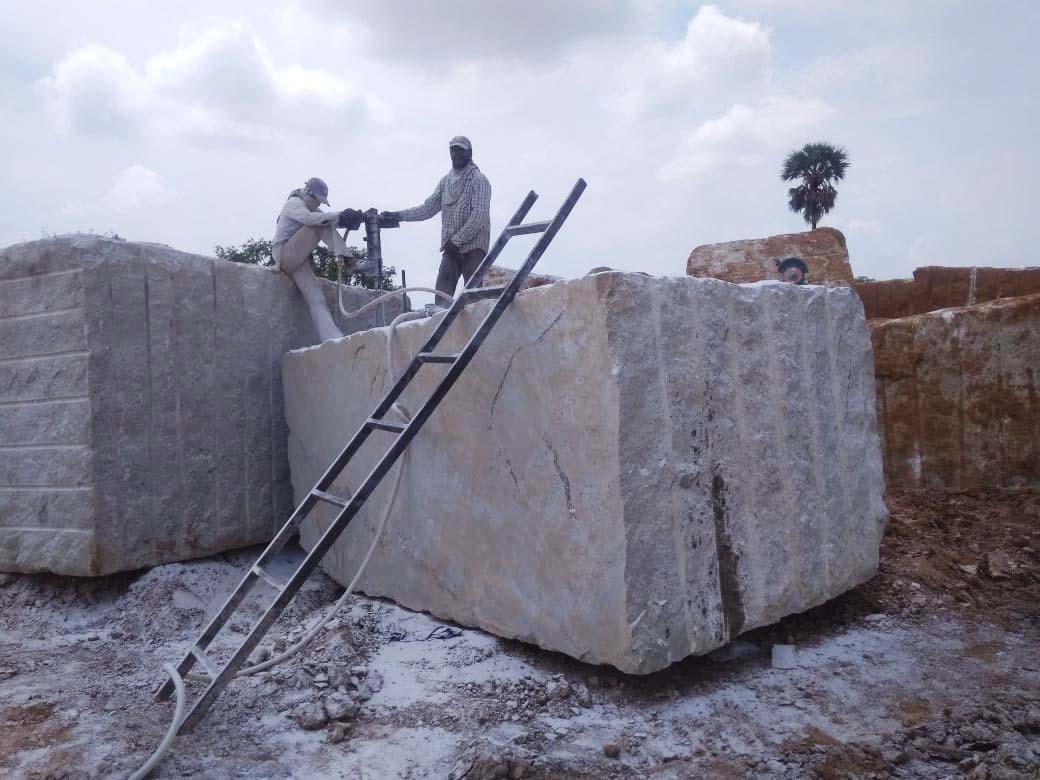Diving into of Granite Quarries in South Africa
Diving into of Granite Quarries in South Africa
Blog Article
Unearthing the Rich Background and Sustainable Practices of Granite Quarrying
As we depend on the precipice of discovering the elaborate tapestry of granite quarrying, a trip with time discloses not just the physical act of drawing out rock but likewise the social and historical importance woven into the extremely textile of this practice. From the ancient beginnings that laid the foundation for contemporary quarrying techniques to the sustainable methods that are forming the future of this industry, each sculpt mark on granite surface areas narrates waiting to be unearthed (granite quarries in south africa). The heritage of granite quarrying extends much beyond mere removal; it is a testament to human resourcefulness, resilience, and the enduring attraction of this magnificent rock
Ancient Origins of Granite Quarrying
Going back to old civilizations, the practice of quarrying granite has actually been an integral part of human background and building innovation. The earliest evidence of granite quarrying dates back to ancient Egypt, where enormous pyramids and elaborate sculptures were crafted from this sturdy stone. The Egyptians used primitive tools to draw out granite blocks from quarries, showcasing the value of this product in their significant constructions.
Moving on in history, the Greeks also made substantial contributions to the quarrying of granite. The Greeks used granite in various building wonders, such as holy places and sculptures, showing their skill in shaping and sculpting this hardy stone. The Romans even more refined the strategies of quarrying granite, employing advanced devices like knives and hammers to extract and shape granite for their renowned structures.
Through the centuries, the method of quarrying granite has progressed, with modern-day technologies enhancing efficiency while maintaining the timeless allure of this natural stone - granite quarries in south africa. From ancient human beings to contemporary home builders, the heritage of granite quarrying remains to shape our globe
Development of Quarrying Methods
The evolution of quarrying techniques has actually been marked by a constant progression in the direction of higher efficiency and accuracy in removing granite. From the simple approaches employed by our forefathers to the innovative modern technologies utilized in modern quarrying operations, the market has actually gone through substantial improvements. Early quarrying strategies involved manual work with standard devices such as knives, hammers, and wedges to extract granite blocks from the planet. As civilizations proceeded, techniques like fire-setting and primitive dynamites were presented to assist in the extraction process.
In even more recent times, the introduction of machinery transformed the quarrying market, allowing faster removal prices and raised performance. Technologies such as diamond wire saws, high-pressure water jets, and pneumatically-driven drills have actually ended up being basic in modern quarries, allowing for specific cutting and minimized waste. Advancements in computer-controlled equipment and 3D modeling have maximized quarrying operations, leading to minimal ecological influence and enhanced sustainability techniques. As the need for granite proceeds to climb, the development of quarrying methods remains indispensable to conference sector requires successfully and sustainably.
Cultural Importance of Granite
Granite holds a profound cultural value throughout different civilizations because of its enduring existence in architectural masterpieces and prized monoliths. From the marvelous pyramids of Egypt to the intricate carvings of the Angkor Wat holy place you can check here in Cambodia, granite has actually been a material of choice for revealing magnificence and longevity in cultural heritage. In ancient Rome, granite columns decorated temples and public buildings, symbolizing toughness and durability. The cultural importance of granite expands past its physical characteristics; it embodies strength, stability, and timelessness, making it an icon of withstanding heritages and practices.

Lasting Practices in Quarrying
Among the rich background of granite quarrying and its social importance lies an expanding emphasis on lasting practices within the sector. As environmental recognition and issues concerning resource exhaustion have increased globally, the quarrying industry has actually progressively accepted lasting techniques to minimize its impact on the atmosphere and surrounding communities.

Additionally, reclamation and rehab of quarry sites post-extraction are integral to lasting techniques. By restoring quarried areas to an all-natural or helpful state, such as producing wild animals habitats or recreational spaces, quarriers can offset the environmental footprint of their visit this web-site procedures and contribute positively to the regional environment.
Heritage of Granite Quarrying
With a historic backdrop steeped in workmanship and commercial progression, what withstanding influence has granite quarrying left on the landscape of contemporary society? The tradition of granite quarrying transcends plain extraction methods; it has actually shaped architectural marvels, metropolitan landscapes, and cultural heritage worldwide. The sturdy nature of granite has actually made it a recommended choice for monoliths, structures, and facilities, standing as a testimony to the skill and creativity of quarry employees across generations.
In addition, the economic footprint of granite quarrying can not be forgotten. The industry proceeds to supply job opportunity and drive local economic climates in regions where granite extraction is common. It has additionally spurred technological improvements in quarrying strategies and equipment, leading to more efficient and lasting techniques.
In terms of sustainability, the tradition of granite quarrying includes initiatives to mitigate ecological impacts via reclamation jobs and liable resource administration. By stabilizing financial passions with environmental stewardship, the sector strives to make sure that future generations can remain to gain from this enduring natural deposit.
Verdict

Report this page